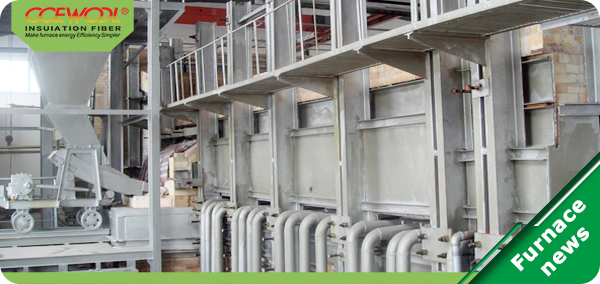
May. 18, 2016
Refractory materials are the main build material for glass melting furnace, it impacts much for glass quality and energy consumption. Development of glass melting technology to improve relies heavily on technology advance and refractories quality.

Glass melting furnace structure:
For large float line, the glass furnace is constituted by L-shaped hanging wall (usually silica brick), the melting unit (direct contact with the molten glass use fused tiles, upper site use fused silica brick), card neck (usually use silica brick), the cooling unit including ear pool (direct contact with the molten glass where commonly use corundum material, where not in contact with molten glass using silica brick or corundum brick), Annealing furnace (CCEWOOL ceramic fiber blanket is the suitable) , regenerator (Choose CCEWOOL clay brick, CCEWOOL high alumina brick, directly bonded magnesia-chrome brick).
The main part of the glass melting furnace’s using conditions and choice of refractory material:
Arch top of glass furnace’s melting section and the cooling section, which operating temperature is 1600 ℃, the refractory material should bear high temperature and heave loading, also for flushing of the batch. Therefore, silica brick is the perfect choice.
Partially melted portion is in direct contact with the wall portion of the cooling liquid glass, which always attached by the molten glass flow and high temperature molten glass caused due to erosion, using fused zirconia corundum brick corundum brick α-β, corundum brick β.
Because all the brick body bear high-temperature, dust, steam base effect, the extent of erosion by the arch and side walls of the more serious, so the refractory material for checker is more serious. The checker plugging collapse often lead repair for cold glass kiln. So they requested that the checker used refractory should be high mechanical strength, low creep. the upper part of checker: where the temperature is up to 1100-1400 ℃, the general use is magnesia brick.
Central of the checker: which temperature is 800-1100 ℃, should use directly bonded magnesia-chrome brick, spinel, forsterite and magnesium, zirconium brick tiles.
The lower portion of the checker: it is in low operating temperatures, bearing heave load. But it is close to the flue and directly affected by cold air, so the refractory material should be good thermal shock resistance. Most generally choose CCEWOOL low porosity clay brick.
